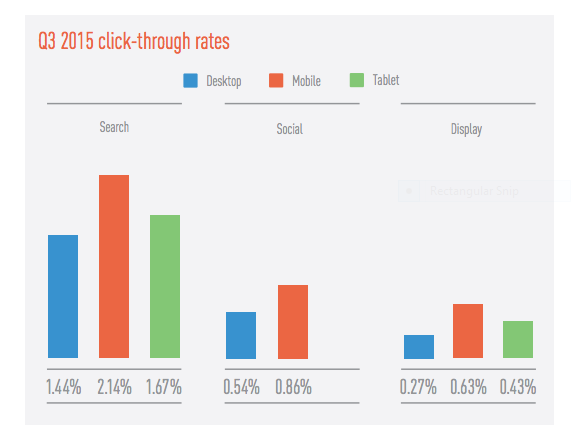To be effective, marketing messages have to be delivered to the right consumers through the right channels. But these days, as new channels pop up almost daily, which are the right ones?
Obviously, a question that crucial is going to have a complex answer — several, in fact. This blog will attempt to chip away at some of those answers as we explore the role of emerging media channels in the marketing/communications field.
Let’s start with the data. The ways in which people access information online have changed. This time last year marked the first time mobile-only Internet access topped desktop-only Internet access.

Mobile Internet growth has not only increased the amount of time people spend online, it’s also given rise to unique mobile-first and/or mobile-only apps and platforms like Instagram, Vine and Snapchat.
But just because consumers are more connected to the Internet, does that mean they want to be more connected to brands and advertisers? Just because they’re on these emerging platforms, does that necessarily mean they expect advertisers to be there too?
As in any realm, actions speak louder than words, and so far, consumers appear to be responding to brands in the ever-widening online landscape, if ad click-through rates are any indication.

Bolstered by numbers like these, advertisers’ confidence in the power of digital seems to be increasing — along with their spend. While digital accounted for just 28% of the country’s $187 billion ad spend in 2015, it is the fastest growing segment, by far.

But as this graphic shows, the advertising industry isn’t truly changing channels as it was defined back in the days of non-voice-activated remotes and VCRs; that is, we’re not watching (spending on) only one channel at the the exclusion of everything else that’s on. Instead we marketers can think of our digital spend as the channel/show we’re most excited about, the one we’re going to watch live because is has the most potential impact. We watch it not because we want to miss the other shows that are on (or in this analogy, the more traditional media channels we can advertise on), it’s just that those other shows are slightly less important to us and so can be recorded by our DVR, watched online or caught up on via Netflix, YouTube, etc.
Just as consumers use a variety of channels to keep up with their favorite shows, modern marketers must use a variety of channels to keep up with their consumers. But which channels should be primary, which secondary and which ignored entirely? How do we even use some of the newer channels? Which channels can be combined for maximum effectiveness? Which channels hold the most appeal for select demographics? Stay tuned…
You pose some really great questions and commentary, especially your mention of looking to demographic cohorts to better understand which channels work best for them. As a millennial, the best way to reach me is via social media platforms such as Facebook, Twitter and Instagram. I’m especially driven by user-generated content and will share meaningful information with my friends and family. Of course, social media and content marketing are also valuable to most millennials. In fact, millennials turn to social media to educate themselves about any and everything online. A survey reports that while search engines are used to gather information, they “fall below Facebook and Twitter for content discovery.” The survey sums up millennials well: “The gestalt image that one gets is of a generation of sophisticated technology and internet users that wants relevant advertising but not too much privacy intrusion and will simply ignore marketing messages that don’t speak to them directly — literally and figuratively.” As marketers, we have to deliver the right messages to the right consumers at the right time and through the channels they’re most receptive to. Whew! I look forward to your future posts!
http://marketingland.com/survey-best-way-reach-millennials-social-media-91241
LikeLike
I think I always look at things differently than most people. For example, I think there is a simple reason why people browse the internet more on their phones which lead to higher open and clickthrough rates. I think it is because of the cell phone companies. Think about it.
In earlier years most phone plans had a stronger focus on talk/text with data being an afterthought resulting in plans with low data capability. Now it has shifted to where plans now focus on data resulting in most plans having unlimited data which gives customers unlimited access to the internet. This results in more time spent on the internet. Let’s also keep in mind the evolvement of “mobile” internet. Instead of a version of the internet now you can get full internet access as if you were on a laptop. We are in a digital world now so everything seems to be going mobile. Great post.
LikeLike